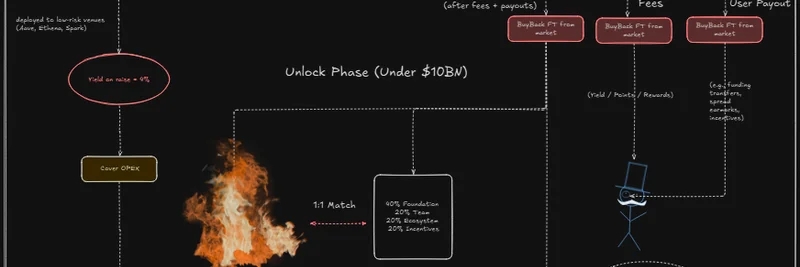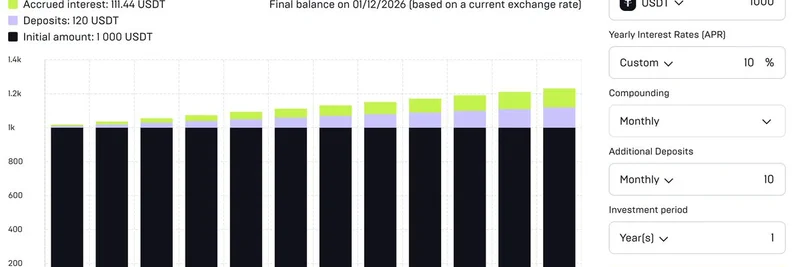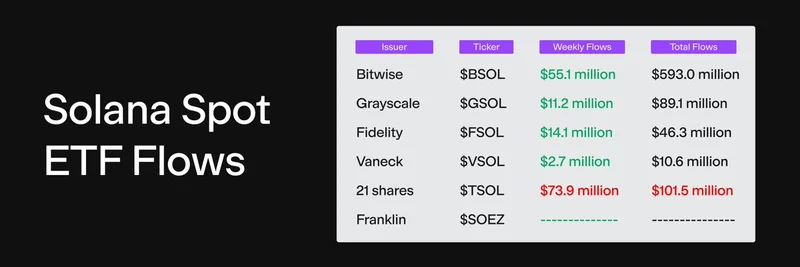If you're diving into the world of DeFi and meme tokens, you've probably heard the buzz around Flying Tulip and its native token, $FT. This project, spearheaded by the legendary Andre Cronje, isn't your typical crypto venture—it's packed with clever mechanics designed to keep things deflationary and user-focused. Recently, a detailed breakdown popped up on X from @IntelScout, outlining the value flow and supply dynamics of $FT. Let's unpack it step by step, keeping things straightforward so even if you're new to blockchain, you can follow along.
First off, Flying Tulip just wrapped up a massive $200 million funding round at a $1 billion valuation, as reported on Yahoo Finance. They're aiming for up to $1 billion in total capital, which will back the $FT tokens. What's unique here is the "perpetual put" option—think of it as a safety net where holders can redeem their tokens at the original price anytime, burning $FT in the process to tighten supply.
The Token-First Philosophy
At the heart of $FT's design is a "token-first" approach. Instead of minting new tokens for payouts, the protocol buys $FT directly from the market. This means distributions to users—like rewards, incentives, or yields—are non-inflationary. No extra tokens flooding the supply; everything comes from existing circulation, which helps maintain value.
From the original thread on X, this mechanic shines through in how revenues and yields are handled. Fees from users (like slices from perp trading, spot fees, or lending) get funneled back into buying $FT, which is then distributed. It's a loop that rewards participants without diluting the token.
Burn Mechanics: Deflation on Steroids
Burning tokens—permanently removing them from circulation—is a big deal in crypto for creating scarcity and potentially driving up value. Flying Tulip takes this to the next level with multiple burn triggers:
Yield from the Raise Pool: The initial $1 billion raise is invested in low-risk venues, expecting about 4% yield. This covers operational expenses (OPEX), and any excess buys $FT on the market... just to burn it.
Perpetual Put (PUT) Redemptions: Holders can redeem at par value, but the $FT gets burned while the backing stays in the NFT. If you sell or transfer without the PUT, the released backing still buys and burns $FT. Secondary buyers don't get the PUT, which cleverly incentivizes early participation.
Team Alignment Burns: The team doesn't get free tokens upfront. If they claim allocations, there's a matching market buy and burn. Opt for capital instead? Corresponding $FT gets torched.
Revenue Buybacks: Net protocol revenue after costs and distributions buys $FT. Until $10 billion nominal is unlocked, it's allocated across foundation, team, ecosystem, and incentives—with matched burns to keep circulating supply flat. Post-$10B? Straight to burns.
This setup, as highlighted in the thread, ensures "burn, burn, and MORE burn." It's deflationary by design, countering the usual token inflation seen in many projects.
Where Does the Value Come From?
Wondering about the income streams? It's all tied to the protocol's operations on the Sonic $S ecosystem. Sources include:
User fees from perp/CLOR, spot/AMMs, routing, lending, and liquidations.
Yields from ftUSD, funding transfers, supplier shares in lending spreads, maker/LP incentives, perp incentives, and insurance rewards.
All of this feeds back into buying $FT for distributions, creating a self-sustaining cycle. As IQ.wiki notes, the tokenomics align incentives for the team, investors, and users, with no initial team allocation—everything is earned.
Why This Matters for Meme Token Enthusiasts
Even though Flying Tulip leans more DeFi than pure meme, its mechanics offer lessons for the meme token space. The focus on burns and market buys could inspire more sustainable models, reducing rug-pull risks and rewarding long-term holders. If you're tracking projects like this, keep an eye on Flying Tulip's official site for updates on the public $FT sale.
In the replies to the thread, folks are hyped: "yep, $FT tokenomics are next-level" and "I like how they’re buying tokens from the market instead of minting new ones." It's clear this approach is resonating in the community.
Flying Tulip's $FT isn't just another token—it's a blueprint for smarter crypto economics. Whether you're a builder, trader, or just curious, understanding these flows can give you an edge in the fast-moving world of blockchain. Stay tuned for more breakdowns here at Meme Insider!



